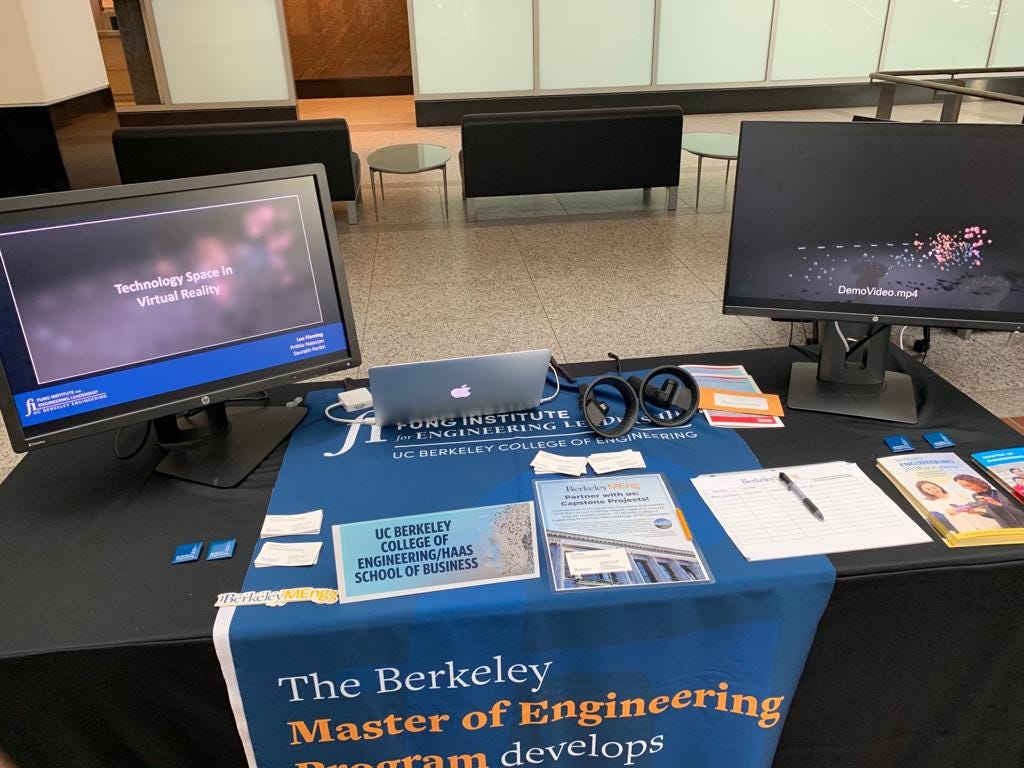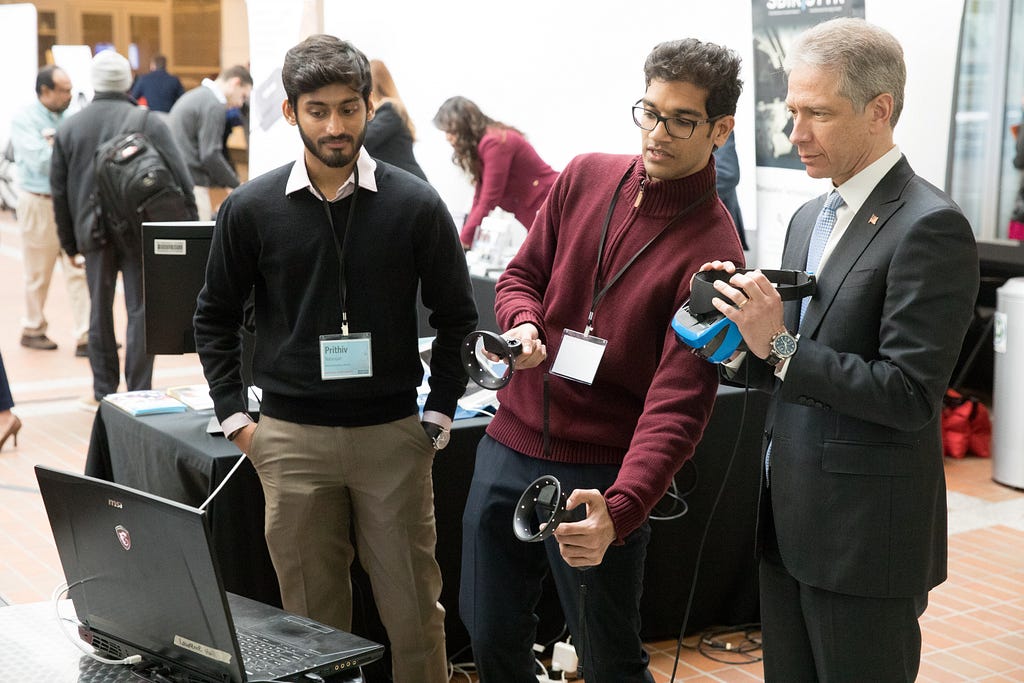By Prithiv Natarajan

Defining the scope
The unique thing about Capstone projects at the Fung Institute is that we define the scope of the problem. (Thanks to Dilnoza Bobokalonova (M.Eng. ’19) and Scott Johnson (M.Eng. ’18) for giving us a good head start.) When brainstorming ideas, we were determined to work closely with the examiner segment of the USPTO. Usually, patents are issued with an application process, followed by the assignment of supervisors and many other managers who route the application to different classes based on the field of the patent. Finally, the patent reaches a sub-group of examiners who scrutinize it for its issuance. We were motivated by the vision that a VR tool could help visualize patents in a seamless fashion and the data points could help develop a technology space wherein an examiner could see the patents in an intuitive manner. Our final goal was to assign an appropriate examiner to patents thereby automating the existing routing system. We were making progress. Our next step in mind was to work closely with patent classification, and soon with examiner information (usually restricted by privacy policies) to understand how examiners are assigned.
USPTO conference on AI and IP Policy
The night before our exhibition at the USPTO conference on AI and IP Policy, we prepared our VR sets and looked through patent data one last time. On the day, we were welcomed by the biting cold, as well as the USPTO team with our panels set with screens for the data and a separate place for the VR system. On receiving updates about our progress, Chief Economist Andy Toole and Nicholas Pairolero joined in with their ideas about using this tool to assist the examiners as well as classify patents using Natural Language Processing. Joining us were Google, IBM, as well as Bay Area’s Palantir and the National Science Foundation (NSF) showcasing exceptional work in NLP, automating the process of patent issuance. Moreover, their work has given us more ideas to bolster our future work in terms of the “UI/UX” of Virtual Reality. While we waited, our panel had attracted more and more people, thanks to our VR headset which made it look more futuristic than ever. We were glad to witness the excitement in the crowd. They were thrilled to listen to our presentation about VR, NLP and the usage of this tool at the USPTO. Even though our idea was aimed to assist the examiners, we were questioned right and left about how a machine could replace this long established and rather cumbersome routing process. The exciting crowd reminded me of the way I felt when I signed up for this Capstone. I felt that I was going to be a part of a startup whose potential customers were the examiners that we planned to sell our prototype to. I imagined this is what it would feel like to be an entrepreneur, showcasing the project and pilot testing it with people while receiving all kinds of valuable feedback. This feedback gave us more knowledge and perspectives and have stirred up the motivation in us to work even harder.
Applying virtual reality to the US Patent and Trademark Office (USPTO) was originally published in Berkeley Master of Engineering on Medium, where people are continuing the conversation by highlighting and responding to this story.


